Key Takeaways
- Belle Époque fashion embraced luxurious, artistic color palettes.
- Delicate pastels and vibrant jewel tones defined elegant silhouettes and high society attire.
- Opulent dyes, rich fabrics, and careful layering guided color choices.
- Designers of the era set lasting standards for harmonious color combinations.
- Modern wardrobes can adapt these palettes by mixing timeless hues with contemporary essentials.
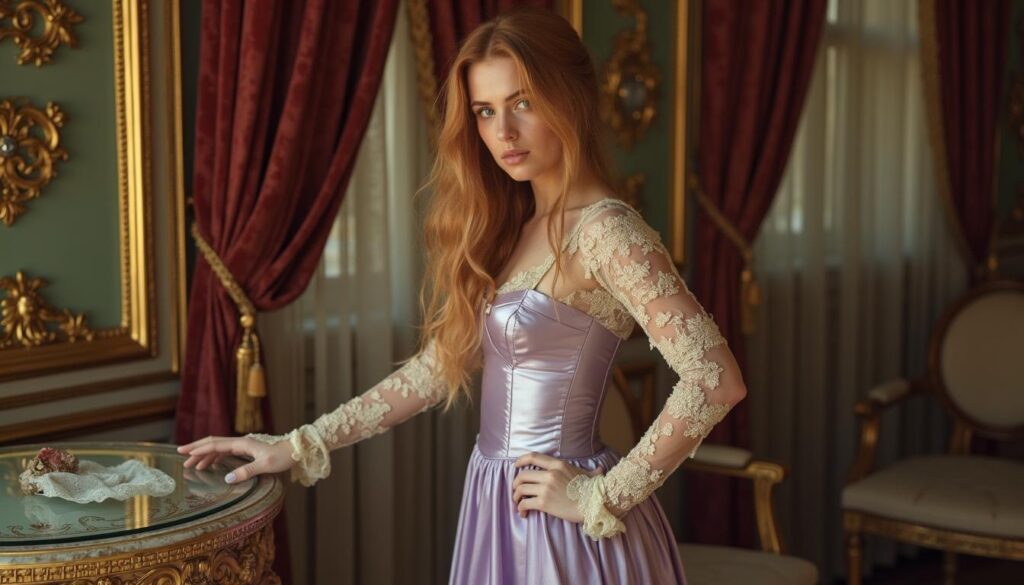
The Belle Époque era, stretching from the late 19th century to the eve of World War I, offered a dazzling display of refinement and splendor. During these decades, European fashion reached heights of elegance rarely seen before. Stylish women and men surrounded themselves with opulent attire, intricate fabrics, and exquisite colors.
Clothing ceased to be only functional; it became an art form. The colors of the Belle Époque set the stage for dynamic contrasts and harmonious blends that complemented architecture, interiors, and accessories.
From pastel day dresses at tea salons to jewel-toned evening gowns at grand galas, the hues of this era were chosen to reflect taste, sophistication, and social standing.
Even today, this palette inspires us to create wardrobes that capture a sense of timeless luxury. Let’s dive deeply into the colors that defined this moment in history, and learn how to bring them into our present lives.
The Emergence of Belle Époque Color Aesthetics

The Historical Context: Europe’s Golden Age
The Belle Époque coincided with a period of relative peace and prosperity across Europe. This calm allowed the arts, fashion, and design to flourish. Colors in fashion began to drift away from the rigid darkness of the Victorian era. Skilled artisans experimented with new dyes and textures, and a vibrant color culture emerged. The well-to-do classes, secure in their status, wanted more than utility. They demanded beauty and originality in every garment.
The Shift from Dark Victorian Hues
In contrast to the heavy, darker tones that once dominated wardrobes, this new era of fashion embraced lighter, brighter colors. Gone were the days when everyone wore somber shades. Instead, delicate pastels, intricate patterns, and plush jewel tones replaced monotony. This shift was not random. It reflected a broader cultural desire for optimism, innovation, and the pleasure of simply enjoying life.
Artistic Influences from Impressionists and Art Nouveau
Fashion did not develop in a vacuum. Impressionist painters, Art Nouveau designers, and other creative movements inspired the Belle Époque color scheme. Pastel shades found on canvases appeared in gowns. The sweeping organic lines of Art Nouveau translated into subtle patterns and embroidery on skirts and blouses. Designers borrowed freely from the art world, producing clothing that felt like moving paintings.
Signature Color Palettes
Soft Pastels: Rose, Lavender, Mint
Soft pastels were everywhere. Pinks, lilacs, and gentle greens captured a feeling of springtime freshness. Delicate blouses, tea gowns, and day dresses adopted these gentle tones. They offered a sense of tenderness and femininity, making them perfect for afternoon socials and garden gatherings.
Deep Jewel Tones: Emerald, Ruby, Sapphire
Not all Belle Époque colors were light. Opulent jewel tones like emerald, ruby, and sapphire enhanced evening ensembles. These colors demanded attention. Imagine walking into a ballroom wearing a deep emerald satin gown, shimmering under candlelight. Jewel tones had gravitas. They turned ordinary outfits into works of art, ensuring the wearer stood out in a crowd.
Metallic Accents: Gold, Silver, Platinum
Metallic details became the finishing touch. Gold-threaded embroidery, silver brocade panels, or platinum beads sprinkled on fabrics brought luminescence. They complemented both pastel and jewel-toned garments. Metallic accents symbolized luxury and status. Today, we still see metallic touches in accessories, jewelry, and even footwear, echoing the Belle Époque’s shine.
Luxurious Fabrics and Their Hues

Silk and Satin Finishes
Silk and satin produced colors that shimmered in light. These fabrics reflected hues with a fluid brilliance. A pastel pink silk dress seemed to glow. Jewel-toned satin skirts appeared richer. Quality silk and satin captured depth of color that ordinary cotton could never match. They elevated hues, giving them a luxurious dimension.
Velvet’s Deep Saturation
Velvet delivered intense saturation. Jewel tones on velvet fabric looked almost three-dimensional. Velvet jackets, bodices, and gowns had a tactile quality that mere visuals can’t convey. Running your hand across a midnight-blue velvet panel felt sumptuous. The fabric and color worked together to enhance the perception of quality and elegance.
Lace and Delicate Tints
Lace, a favored embellishment, allowed subtle tints—like very pale pink or ivory—to shine. These delicate colors played a supporting role, softening bolder hues and adding texture. Lace collars, cuffs, and overlays contrasted beautifully with heavier fabrics, contributing to a balanced color narrative.
Evening Wear Elegance
Ball Gowns and Luminous Sheens
Evening occasions were prime opportunities to show off one’s taste in color. Ball gowns with luminous sheens of satin or taffeta radiated wealth. Light danced on the fabrics. Rich jewel tones glowed like stained glass. Pastel gowns radiated a gentle aura, perfect under soft candlelight.
Color-Coded Social Signals
Colors also carried subtle social signals. Wearing a particular shade of lavender or a certain hue of pink could reflect the season, event type, or even mood. Guests at high-society gatherings often chose colors that harmonized with each other, turning the ballroom into a kaleidoscope of refined palettes.
Harmonizing Color with Accessories
Belle Époque fashion knew how to coordinate. Gloves, fans, and tiaras often matched or complemented dress colors. A soft pastel dress might pair with a slightly darker fan to create contrast. A ruby gown might meet a pearl-studded hair ornament. This thoughtful approach ensured that every accessory enhanced the overall look.
Daywear and Subtle Tints

Tea Gowns in Gentle Tones
Daytime attire called for gentle tones. Tea gowns in pale creams, blush pinks, and icy blues lent a sense of quiet refinement. They felt proper yet relaxed, perfect for an afternoon visit or a stroll in the park.
Tailored Suits in Refined Palettes
For more structured daywear, tailored suits in neutral or muted hues offered a chic alternative. Soft grays, light browns, and dove blues combined style with professionalism. These elegant suits were versatile and paired well with colorful accessories, maintaining Belle Époque flair without overwhelming.
Incorporating Subtle Prints and Patterns
Subtle prints and patterns brought depth without breaking the refined mood. Small florals, gentle stripes, or delicate polka dots appeared in whisper-light pastel. This approach allowed the wearer to experiment with color and pattern without stepping outside the era’s elegance.
The Role of High Society Salons
Fashionable Gatherings and Color Displays
Social salons were showcases for color. Guests wore the latest shades, inspired by Parisian trends. Hostesses decorated rooms with matching drapes and upholstery. Everyone played their part, and the result was a living tableau of harmonious hues.
Matching Décor and Attire
Sometimes the backdrop matched the attire. Soft pink walls set off pastel dresses. Rich tapestries mirrored jewel-toned gowns. This synergy between interior design and fashion colors heightened the overall aesthetic experience.
Seasonal Color Rotations
Salons followed seasonal rhythms. Spring gatherings favored pale greens and blossoms of pink. Summer allowed crisp whites and airy pastels. Autumn brought out warm browns and muted golds, while winter events glowed with ruby velvets and gilded details. The Belle Époque understood that colors breathe with the seasons.
Influential Designers and Couture Houses

Early Couturiers Shaping Color Trends
Leading designers influenced public taste. The era’s couturiers experimented with dyes, drawing from art and culture. They introduced palettes that spread through high society, establishing what was “in vogue.”
Craftsmanship and Dye Innovations
Dye-making advanced significantly, enabling stable, vibrant hues. Skilled dyers produced colors that resisted fading. This innovation gave designers more freedom, allowing them to incorporate intricate color schemes into their collections.
Signature Designer Color Motifs
Some designers became known for signature palettes. One might favor soft lilac and silver accents, another emerald and ivory contrasts. Such consistency built brand recognition. Clients returned for that special combination they adored.
Techniques for Today’s Wardrobe
Adapting Belle Époque Hues in Modern Outfits
To bring Belle Époque palettes into a modern wardrobe, start with a single piece. A pastel blouse, a jewel-toned dress, or a velvet jacket can set the mood. Build around it with neutral basics to keep the look approachable.
Layering Textures for Depth
Mix fabrics like satin, lace, and velvet to achieve depth. The interplay of textures enhances color perception. A pastel lace top under a structured blazer becomes more interesting. A jewel-toned velvet clutch paired with a crisp cotton dress adds luxurious contrast.
Mixing Vintage and Contemporary Pieces
Combine vintage finds—perhaps a delicate silk scarf or a lace collar—with new staples. A modern navy trouser or a simple white shirt can highlight the charm of Belle Époque-inspired colors. This blend keeps it fresh and current, rather than costume-like.
Accessorizing with Opulent Hues

Jewels and Gemstone-Inspired Details
Choose accessories inspired by gemstones. A ruby pendant or an emerald ring recalls the era’s grandeur. Even costume jewelry in deep tones adds richness. Such touches elevate everyday outfits into something more elegant.
Hair Accessories and Millinery
Hats, hair combs, and headbands sprinkled with subtle metallic elements or pastel ribbons reference Belle Époque flair. These finishing touches frame your face, add interest to your profile, and set you apart in a crowd.
Footwear and Handbags That Pop
Shoes and bags offer perfect opportunities to experiment with color. A sapphire-toned clutch or mint-green heels can breathe new life into neutral outfits. Think of them as color accent pieces that channel Belle Époque opulence.
Combining Colors and Patterns
Pairing Complementary Pastels
To combine pastels, choose complementary hues. Mint and blush, lavender and cream, or pale yellow and soft rose all blend beautifully. This gentle approach creates an airy, sophisticated look suited for daylight affairs.
Using Jewel Tones as Anchors
Jewel tones work best as anchors. Start with one strong color, such as emerald, and layer softer shades around it. A deep emerald skirt matched with a cream blouse and subtle gold jewelry offers richness without chaos.
Metallic Touches for Added Drama
Metallic accessories—gold belts, silver embroidery, platinum-threaded scarves—add drama without overpowering the outfit. Use them sparingly to highlight certain areas, like the waist or neckline, ensuring balance and cohesion.
Sustainable Dyeing and Modern Reproductions
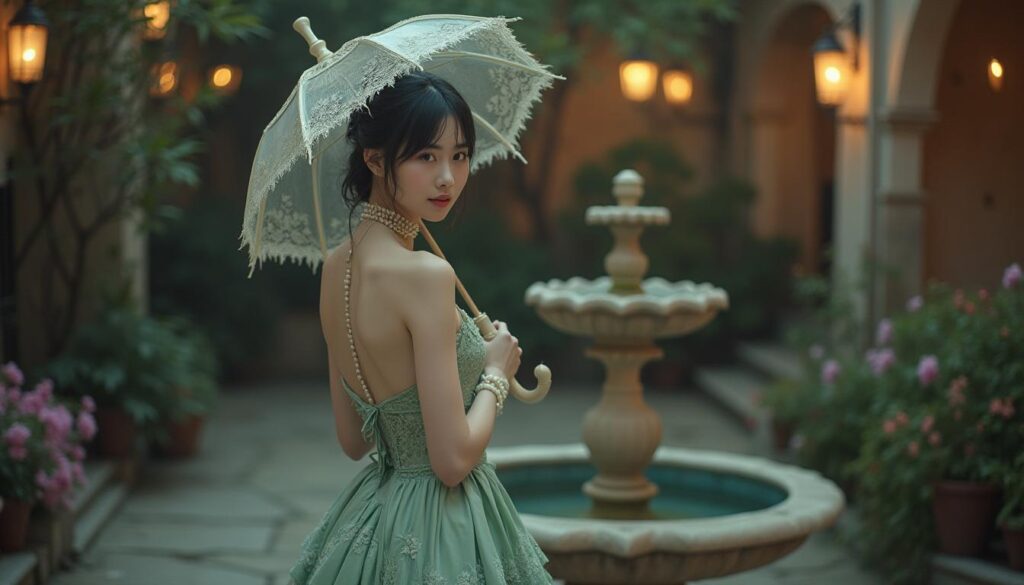
Eco-Friendly Dye Options
Today, sustainable dyeing methods exist that replicate Belle Époque hues without harsh chemicals. Plant-based dyes can yield soft pastels or earthy jewel tones. Opting for eco-friendly fabrics and dyes respects both history and the planet.
Recreating Belle Époque Shades Today
Specialty boutiques and artisans often offer fabrics dyed in old-world shades. Working with these experts helps you achieve authentic Belle Époque colors. If that’s too complex, consider working with vintage garments or hiring a tailor to refresh existing pieces in similar hues.
Specialty Artisans and Vintage Fabric Hunts
Many vintage shops carry remnants from earlier eras. With patience, you might find original silk or lace from the Belle Époque period. Even if these materials are fragile, integrating small panels or trims can lend authenticity and flavor to your modern attire.
Regional Variations and Global Influence
Paris as the Style Epicenter
Paris led the way. French designers set trends, introduced daring hues, and spread them through fashion magazines. The world watched, and style-conscious individuals adapted these colors to their own locales.
English Tailoring and Subtle Coloring
London tailors offered structured silhouettes with subtler palettes. While still luxurious, English fashion leaned toward refined elegance rather than flamboyance. Soft grays, gentle blues, and delicate pinks often found their way into English-made garments.
Influences from Eastern Fabrics and Dyes
Global trade opened doors to materials from distant lands. Eastern silks and dyes enriched Belle Époque palettes. Adapted patterns, vibrant reds, and intricate brocades arrived in Europe, blending with local aesthetics and creating a richer global palette.
Layering for Seasonal Shifts
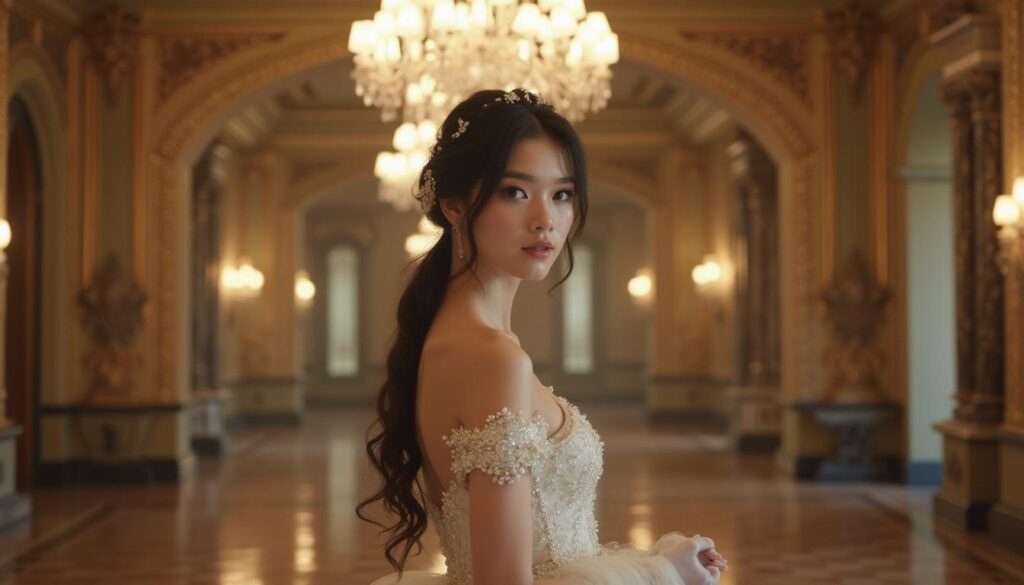
Light Layers in Spring and Summer
Warm months called for lighter layers and fresher colors. Pastels, white linens, and airy lace dresses were practical and pleasing. They allowed the body to breathe while maintaining elegance.
Rich Hues for Autumn and Winter
As weather cooled, wardrobes embraced warmer tones. Deep burgundies, forest greens, and navy blues reflected the season’s mood. Layers of velvet, wool, and heavier fabrics preserved warmth and visual depth.
Transitioning Pieces Between Seasons
One of the Belle Époque’s strengths was versatility. Many garments adapted between seasons. Adding or removing a lace shawl, switching hats, or layering a richer-hued jacket over a pastel dress allowed fashion to flow with the weather.
Curating a Belle Époque-Inspired Closet
Selecting Versatile Key Pieces
Start with staples that capture the essence of Belle Époque colors: a pastel blouse, a jewel-toned skirt, a lace-trimmed cardigan. These pieces become your base. From there, add items that complement and build a cohesive palette.
Building a Cohesive Color Palette
Focus on a limited set of hues. Perhaps you favor rose, cream, and emerald. Stick to them, with occasional accents of metallic gold. This approach keeps your wardrobe unified, making it easy to mix and match garments.
Maintaining and Preserving Delicate Garments
If you invest in high-quality fabrics, treat them well. Hand-wash or dry clean silk and lace. Store items in breathable garment bags. Preservation ensures your collection remains vibrant and timeless, just like Belle Époque wardrobes once were.
Conclusion
The Belle Époque was a golden moment in fashion’s history. Its colors danced between delicate pastels and bold jewel tones, accented by shimmering metallics and fine lace. Each hue had purpose. Each pairing told a story. Today, we can learn much from this era’s attention to detail and luxury.
By incorporating Belle Époque-inspired colors into our wardrobes, we connect with a legacy of artistry and opulence. Whether you’re selecting a mint blouse, an emerald scarf, or a pearl-accented hairpin, remember that color can transcend time. It can turn everyday clothing into something meaningful and enchanting.
With care, experimentation, and the right palette, you can bring the spirit of the Belle Époque into your modern life—elegant, vibrant, and always tasteful.
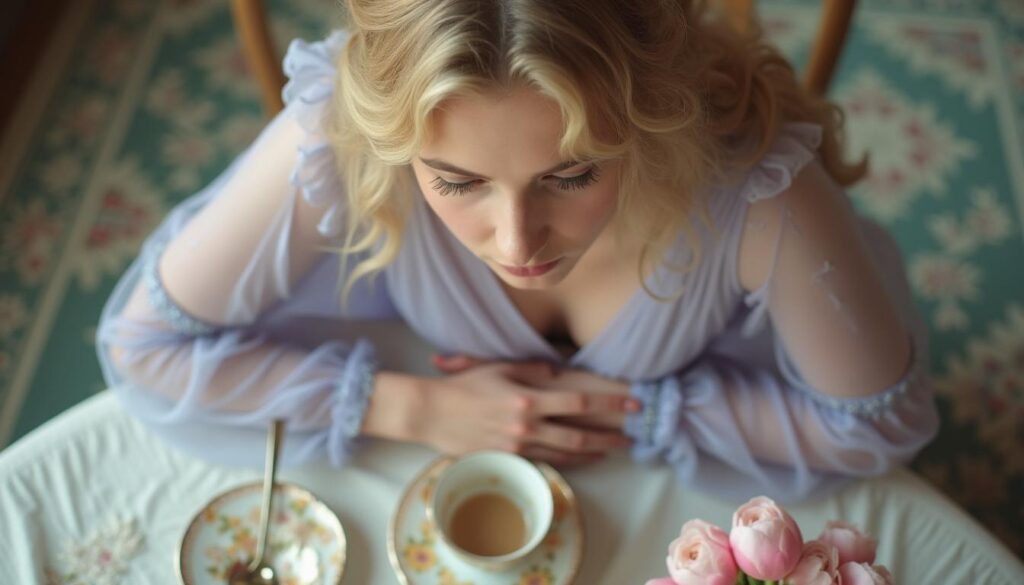
Final Table
| Color Family | Example Hue | Recommended Fabric | Modern Pairing Idea |
|---|---|---|---|
| Pastels | Blush Pink | Silk or Lace | Pair a blush silk blouse with neutral trousers |
| Pastels | Lavender | Satin or Light Cotton | Combine lavender dress with subtle silver necklace |
| Pastels | Icy Blue | Chiffon or Organza | Layer icy blue scarf over a cream blouse |
| Jewel Tones | Emerald | Velvet or Satin | Wear emerald velvet jacket with ivory silk camisole |
| Jewel Tones | Ruby | Silk or Taffeta | Add ruby clutch to navy dress for evening events |
| Jewel Tones | Sapphire | Silk Crepe | Combine sapphire skirt with a soft gray top |
| Metallic Accents | Gold | Embroidered Lace | Integrate gold belt with pastel dress for extra polish |
| Metallic Accents | Silver | Brocade or Beading | Add silver hair pins to lavender gown |
| Metallic Accents | Platinum | Threaded Detailing | Accent cuffs with platinum embroidery on neutral blazer |
FAQ
Q: How can I start incorporating Belle Époque colors without looking overdone?
A: Begin small. Try a pastel blouse or a jewel-toned accessory. Keep the rest of the outfit simple and neutral. Once you feel comfortable, add more pieces that echo the era’s tones.
Q: Are Belle Époque-inspired colors practical for everyday wear?
A: Absolutely. Choose fabrics and items that fit your lifestyle. A pastel scarf or emerald earrings can transform even a basic ensemble.
Q: Do I need vintage items to achieve a Belle Époque look?
A: Not necessarily. Modern brands often offer pastel or jewel-toned pieces. If you want authenticity, add one or two vintage accessories. Mix them with contemporary basics for a balanced, current feel.
Q: How can I ensure my Belle Époque-inspired pieces last a long time?
A: Care for your garments properly. Follow washing instructions, store them away from direct sunlight, and handle delicate fabrics gently. If well-preserved, these pieces can remain vibrant and relevant for many years.

Q: Can I mix Belle Époque hues with patterns or prints?
A: Yes. Choose subtle, complementary patterns. Soft florals or delicate stripes work well with pastels. A jewel-toned piece can anchor a mild patterned garment. It’s all about maintaining harmony.
By exploring and adapting these historical palettes, you can embrace the Belle Époque’s spirit of elegance, creativity, and refined color in the modern world.
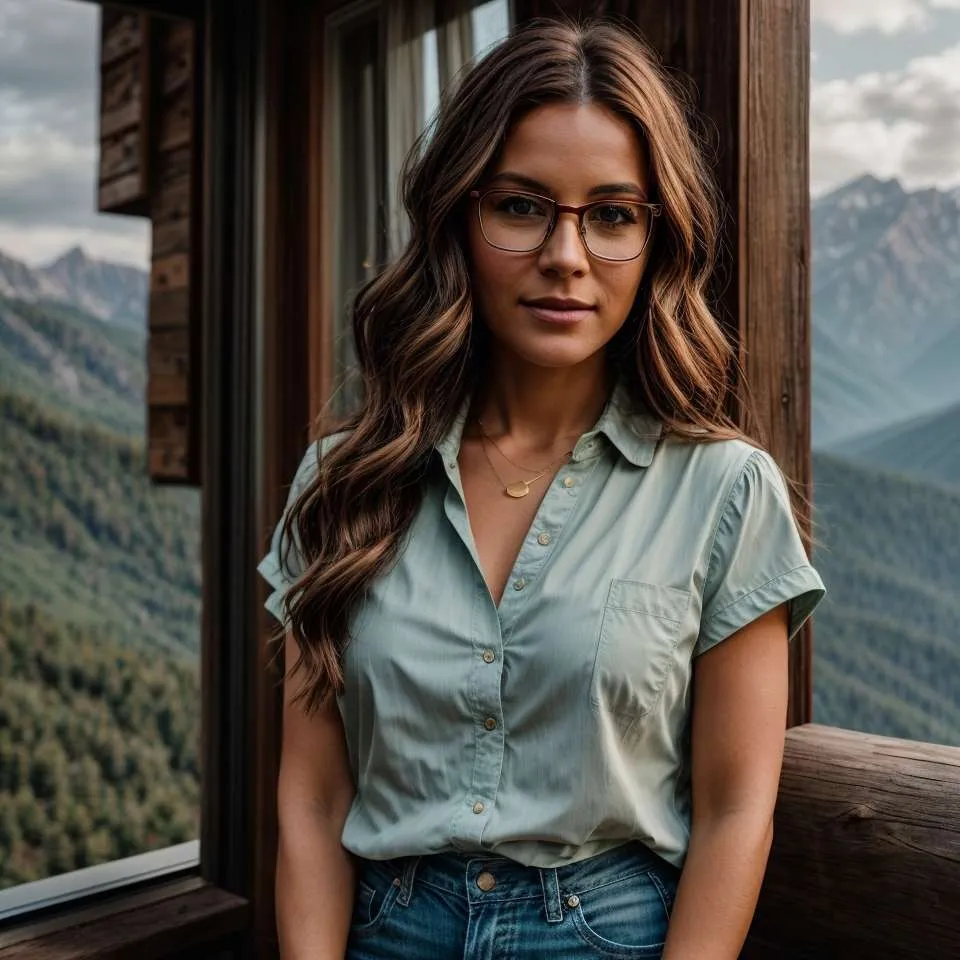
Marcella Raskin is a talented writer and editor with a deep passion for the dynamic realm of clothing colors and patterns. Armed with a strong background in Journalism, she crafts engaging content that empowers readers to select the perfect shades for their outfits. Her pieces provide an in-depth exploration of color trends and expertly curated fashion advice. Beyond her work, Marcella loves discovering new places, connecting with local designers, and advocating for sustainable fashion choices. She is devoted to helping individuals make enlightened color choices for their attire.
Reviewed By: Joanna Perez and Anna West
Edited By: Lenny Terra
Fact Checked By: Matthew Mansour
Photos Taken or Curated By: Matthew Mansour
